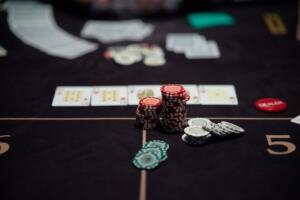Mastering Check Back Bet Strategies in Poker
Let’s face it. Checking back can feel frustrating, right? It’s often more disheartening than folding, which is considered the most cowardly act in poker. When you check-fold, you never had the betting lead to begin with. But in this scenario, you made a bold move with your open-raise, only to hesitate after the flop hits. You glance at your opponent, a stone-faced Scandinavian, and then at the flop showing 7d 7c 6c. You hold As Td and find yourself in a dilemma. Do you bet and risk a check-raise, or do you check and fear losing the initiative on the turn? You might wonder, “What would Phil Hellmuth do?” He’s a poker legend, and you might feel like just a novice in comparison.
This article is designed to equip you with the tools to navigate those uncomfortable boards as the preflop raiser. While I won’t tackle how to silence negative self-talk or build resilience at the poker table—those are discussions for your therapist—this piece will focus on managing equity disadvantages and knowing when to check back the flop.
- At a glance:
- Understanding continuation betting and its importance.
- Recognizing range and nut advantages.
- Practical examples of check back strategies.
The Foundation: Continuation Betting
Before diving into check back strategies, it’s crucial to understand continuation betting (c-betting). In the past, prior to the rise of solvers, c-betting gained popularity because it simply worked. Some astute players had already figured out the underlying reasons, but many believed it was effective just because the preflop raiser held the “betting lead.” The notion of “playing in flow” emerged, suggesting that whoever initiated the betting narrative continued to dictate the game.
Modern solvers, however, have confirmed that the effectiveness of c-betting is not solely about maintaining the betting lead. If c-betting were only about that, checking back would never be an option. The fact that solvers recommend check backs indicates that while the concept of the betting lead can be tactically useful, it’s not the primary factor influencing decisions.
Key Factors in C-betting
C-bet frequencies depend on two main elements:
- Range Advantage: This refers to whose range possesses more overall equity. For instance, if the Button opens and the Big Blind calls, on a board of Ks 7c 3d, the Button typically has stronger hands (like Kx, AA, or top sets) compared to the Big Blind, who might hold weaker hands like small pairs or suited connectors. Thus, the Button enjoys a range advantage.
- Nut Advantage: This is about whose range contains more of the strongest hands available. For example, on a board of 8d 7d 6d, the Big Blind is more likely to hold flushes and straights, while the Button has fewer strong hands. Even if the Button has a slight edge in range equity, the Big Blind controls the nutted hands more often.
While you might have more overpairs and top pairs in your range, remember that No-Limit Hold’em is a five-card game. This foundation is essential for understanding when to check back.
Respecting Your Opponent’s Range
The real driver behind check backs is respect—not respect for the player, but respect for their range. This means acknowledging when your opponent’s range is filled with strong hands and high-equity continuations. In such cases, checking becomes a more frequent option. Textures that require this respect are easy to identify: low, connected boards like 6h 5c 4s, 7d 7s 6d with a flush draw, or 8c 6c 5c monotone.
However, it’s not a binary choice. Some boards warrant almost exclusive c-betting, while others call for frequent checking. Most situations will find the optimal strategy somewhere in between, emphasizing frequency over absolutes.
Practical Example: Lowjack vs. Big Blind
Let’s look at a concrete example. You open from the Lowjack with 40bb, and the Big Blind defends. The flop comes 6h 5d 4c, and the Big Blind checks. What’s your next move?
According to Lucid GTO, the LJ strategy against a BB check on this board suggests checking 53% of the time and c-betting large 47% of the time.
In this scenario, the Lowjack (LJ) strategy involves mixing actions, with checking being the predominant choice. To understand which part of the range should check, we first need to identify what the solver recommends betting with:
- Top of Range: This includes straights, sets, and two-pair combinations—strong enough to withstand unfavorable runouts or aggression from the Big Blind.
- Vulnerable Value: Hands like 88 to JJ, which have high equity on the flop but can be significantly affected by the runout.
- Strong Draws: High-equity bluffs that can withstand aggression and benefit from various runouts.
- EV-Floor Unpaired High Cards: Hands like A9o, KTo, QTo, and JTs, which are low EV relative to the range and have limited playability. They also lack strong showdown value and are sensitive to runouts.
Once you grasp these categories, developing a check-back range becomes clearer. It’s straightforward to say you should check back hands that don’t benefit from betting. On low boards, the burden of checking often falls on your best Ax and Broadway hands, particularly those with backdoor flush draws. These hands don’t want to bet-fold, and while some can withstand a check-raise, frequently bet-calling with them can be costly.
Building Your Check Back Range
To prevent the Big Blind from exploiting your check backs, the solver incorporates a mix of 7x hands (like A7s, K7s, 97s), 98s, and occasionally sets or two-pair hands (like 76s), alongside premium overpairs (AA, KK). You may already check back hands like AK, KQs, KK, and AA, but the adjustment involves adding those draws and stronger combos to your range.
Utilizing this strategy allows you to maintain a balanced approach while preventing your opponent from gaining too much leverage when you check back. It’s about managing the risk versus reward effectively.
Conclusion: Finding Balance in Your Strategy
In poker, particularly when it comes to check back strategies, finding the right balance is key. Respecting your opponent’s range and understanding when to check back can significantly enhance your game. By integrating these concepts into your play, you’ll not only improve your decision-making but also become a more formidable opponent at the table.
Reader Q&A
1. When should I consider checking back on the flop?
Check back when the board texture favors your opponent’s range, particularly when they are likely to have strong hands that could check-raise if you bet.
2. How do I determine my range advantage?
Assess the types of hands you and your opponent are likely to hold based on the preflop action and the flop texture. If your range contains more strong hands, you likely have the advantage.
3. What are the risks of checking back too often?
Checking back too frequently can allow your opponent to take control of the hand, especially if they have strong draws or hands that benefit from seeing additional cards without facing a bet.











